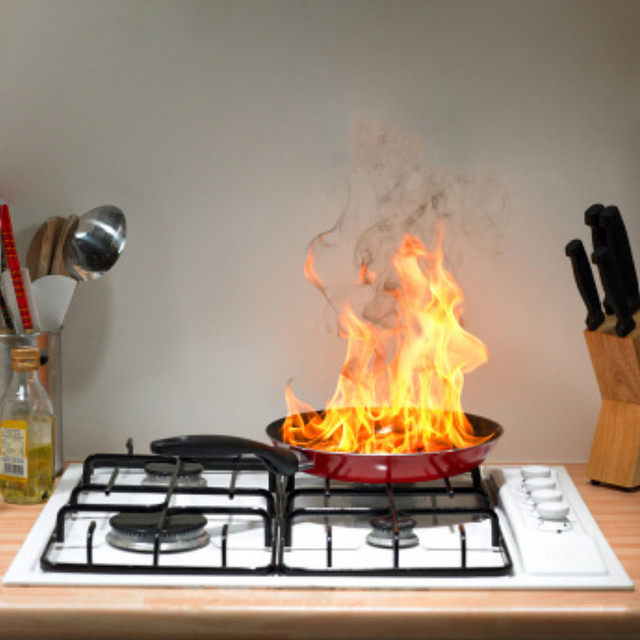Fire Hazards in Your Home
 Reviewing fire prevention is a lot like watching the in-flight safety demonstration on an airplane. No matter how knowledgeable you think you are, it's good to have the rules fresh in your mind -- and follow them. In addition, don't forget to equip your home with smoke alarms and a sprinkler system. You never know when they'll save you and your family from the unthinkable.
Reviewing fire prevention is a lot like watching the in-flight safety demonstration on an airplane. No matter how knowledgeable you think you are, it's good to have the rules fresh in your mind -- and follow them. In addition, don't forget to equip your home with smoke alarms and a sprinkler system. You never know when they'll save you and your family from the unthinkable.
Smoking. Smoking is truly dangerous to everyone's health. Beyond the well-publicized risks of secondhand smoke inhalation, cigarettes and other smoking-related materials are a leading cause of fatal home fires. If anyone in your household is a smoker, they must be super cautious with cigarette butts and ashes at all times, in the living room and other public areas, as well as the bedroom. Better yet, have them try one of the groundbreaking new "quit smoking" programs available.
Space Heaters. Yes, a portable heater is convenient for keeping your feet warm on a chilly evening. However, space heaters are also extremely easy to knock over. Make sure that they are placed on a flat, non-carpeted surface, away from any combustibles like floaty window draperies, and turn them off before you leave the room or go to sleep. Never plug a portable heater into a standard electrical extension cord -- this may cause a short, or even melt the cord. For safety's sake, plug the heater directly into the wall outlet or use a heavy-duty extension cord that can handle a space heater's power draw.
Electrical Cords and Sockets. Installation of GFCI (ground fault circuit interrupter) receptacles is required in the kitchen, bathroom, garage, unfinished basement, and outdoor areas. Make sure that all electrical wires and extension cords are in good repair, free from fraying, cuts, blackening, and other signs of wear; repair or replace electrical equipment that is damaged. Safeguard wall outlets with childproof covers and avoid overloading with too many appliances.
Flammable Liquids and Gases. Gasoline, propane, kerosene, turpentine, paint solvents, and other flammable substances should be stored securely. This means keeping them out of your house or car, for instance in a detached garage or shed, away from a water heater or other ignition source. Use only an approved container for storage and consult your local fire code for limits on the amount you are allowed to have on hand at any one time.
Cooking. Take care of the clutter near your stove -- dish towels hung over the oven door, for example, are a fire hazard. Never wear loose clothing or trailing scarves while you cook. Use back burners and turn pot handles inward to minimize accidents when you have small children at home. And don't try to multitask in the kitchen; keep your attention safely on your cooking. Turn off the burners, ovens, toaster ovens, and so on as soon as you are finished using them.
Insulation. We're all in favor of insulating energy-draining spaces such as attics, but do it smart. Take care not to place insulation in direct contact with recessed lights, or you have a recipe for disaster.
Fireplaces and Chimneys. A buildup of creosote from past fireplace use or flammable blockage in the flue (such as a bird's nest) is a chimney fire waiting to happen. Your chimney flue should be professionally inspected and cleaned at least once annually, depending on how much use it gets. Be careful what you put in your fireplace as well. It's not made to be a garbage disposal so don't use it for burning garden clippings, paper (small particles of lit paper can blow out of the chimney and land on your foliage … or your neighbor's home), or any kind of trash. Use seasoned wood -- the greener it is the greater the amount of hazardous creosote it will leave on the chimney walls. Protect your fireplace with a glass or metal screen.
Laura Firszt writes for networx.com.
Looking for a Pro? Call us (866) 441-6648

Electrical Average Costs
Electricians Experiences

Painting And Handyman Work On The Outside Of My House

New Larson Storm Door Installed



